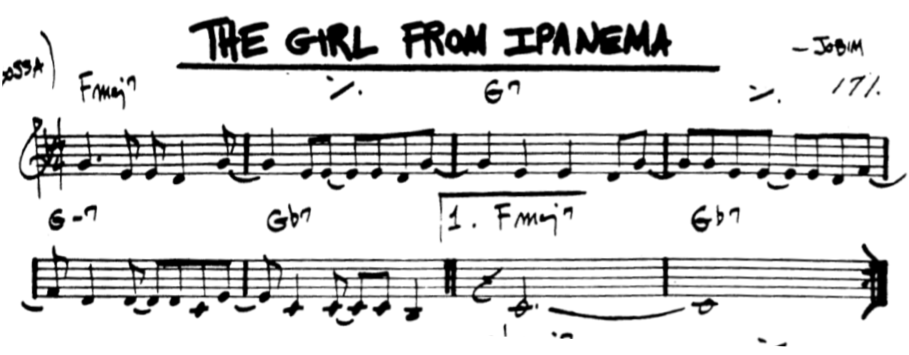

This elegant sequence blends warmth and reflection, offering a gentle serenade that can touch the soul.īossa nova, a style that blossomed in the late 1950s from Brazil, is celebrated for its unique and appealing chord progressions, an essential aspect of its captivating sound.Ī notable bossa nova chord progression is the I – iii – vi – ii (1 – 3 – 6 – 2) in the key of C, which translates to C – Em – Am – Dm.

Starting with a clear C major, it transitions into the more introspective tones of E minor and A minor before settling into the reflective D minor. The I – iii – vi – ii progression in C major (C – Em – Am – Dm) creates a harmonious dance that gracefully shifts from warmth to contemplation. Yet, it is not the sole ingredient – the nuances of rhythm, melody and timing all play a major role in crafting a truly authentic Bossa Nova sound.Īn invitation to the golden sands of Copacabana, a musical embrace that connects you to Brazil’s vibrant culture. Its application can certainly add depth and flavour to your music, enabling you to create compositions that are redolent of the beauty and complexity of Brazilian culture. Unquestionably, the I – IV – ii – V chord progression is a fundamental element of Bossa Nova. Thus, to truly add a touch of Brazil to your music, it is crucial to study the emphasis on syncopation and the characteristic bass line rhythms that typify Bossa Nova. However, it is worth noting that the true magic of Bossa Nova lies not merely in the chords, but in the rhythmic patterns and phrasing that surrounds them. Intermediate level musicians and beyond can incorporate this progression into their compositions to achieve the signature Bossa Nova style. The I – IV – ii – V progression dates back to the 1950s and 1960s, the golden age of Bossa Nova. Moreover, the progression’s wistful and jazzy quality underpins the definitive Bossa Nova ambience. In support of the above statement, the I – IV – ii – V progression lends itself well to various rhythmic interpretations which is significantly suitable to the uniqueness of Bossa Nova. Thus, if you aim to infuse a touch of the tropical into your compositions, understanding and incorporating this chord progression can be invaluable. This particular sequence is not only common in Bossa Nova, but also forms the backbone of many jazz standards. One such progression is the I – IV – ii – V, corresponding to C Major – F Major – D minor – G Major in the key of C Major.

Known for its characteristic rhythmic patterns, the genre of Bossa Nova has inarguably impacted the sound of music both within and beyond Brazil’s borders.Īt the heart of this iconic style lie key chord progressions that lend Bossa Nova its distinctive sound. Known for its rich, soothing harmony, this progression is the key to recreating the intricate melodious sound of authentic Bossa Nova. This chord progression, I – IV – ii – V, is a classic in Bossa Nova music, acting as the rhythmic backbone to inject the unique Brazilian feel. This progression captures the soulful, breezy essence of Bossa Nova music.


 0 kommentar(er)
0 kommentar(er)
